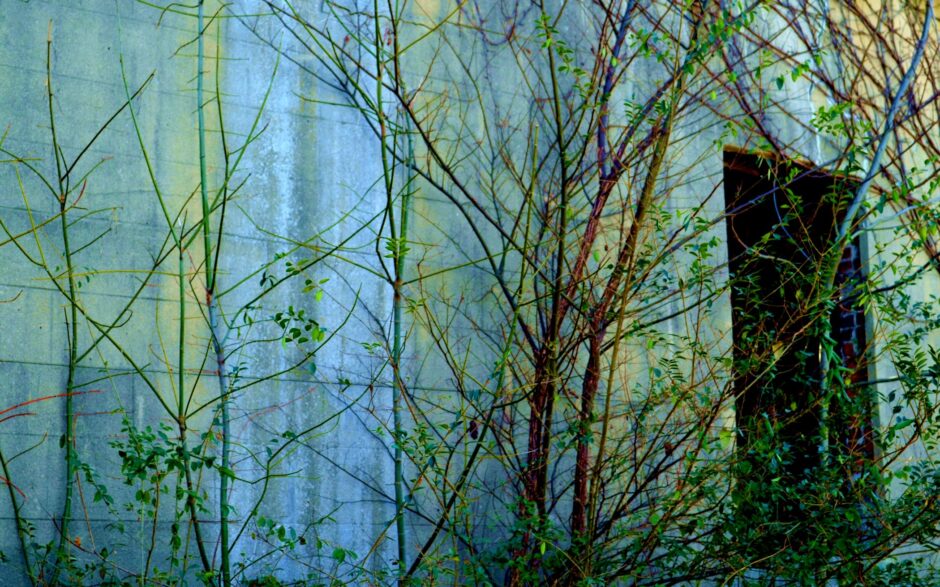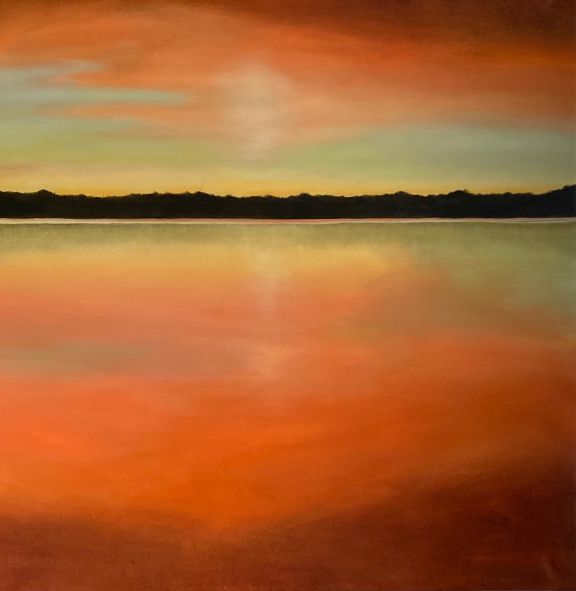SOUTHERN
SNAPSHOTS

Living Watchtowers
by
Chip Burson
They were here, watching, for centuries, long before
the Europeans came. Angel Oak, alive and well on
John’s Island, is said to be over fourteen-hundred
years old, and may be the oldest living thing east
of the Mississippi River.
The Deep South is rivaled only by the Far East in the
practice of ancestor worship, and these grand Druidic
totems were here watching when the European
ancestors believed the world to be flat, and that
monsters were waiting to consume them at the
edge, where the sea fell off into oblivion.
When the Roman Empire had crumbled its slow
death through invasion after invasion by the barbarian
hordes, and the Eastern Empire was ruled by Justinian,
these trees were rising from the earth.

These Watchers, witnesses, all along the Southern
coast, were gazing out to sea toward the British Isles
in the era that would give rise to the stories of Arthur,
“the once and future king.”
Before the Vikings and Columbus, before the
Jamestown settlers or the Puritans of Plymouth
Rock, here stood these silent sentinels looking out
to sea. They were here before us all, we proud
Southerners, so often obsessed with searching for
that touch of ancient nobility in our long lines of
proud breeding—whether fact or fiction.
Fleeing persecution, seeking fortunes, or drawn by the
sirens of exploration and adventure, each settler was
drawn with fierce determination to a New World, and
they watched in silence.
Their thick gnarled trunks are ringed inside with the
records of a millennium, and hold the carbon clues of
the earliest people on the land. They are the eyes that
look back into history and record with dispassion the
windstorms and the wars—all the history of this land.
Gray-bearded incarnations of Wisdom herself, they
have watched us in our triumphs and our self-willed
misfortunes. They have looked down upon the
plantation as it was built in slavery, set to freedom,
languished, was reborn, and preserved, now
photographed and admired—seen, possibly—as they
see it from the arbor of ancestral perspective.
These noble giants look upon us, we humans so proud of
our frail creations, and suffer us our foolishness. These,
our Watchtowers, have witnessed and weathered it all;
and it will be so when we are gone to dust.
The Backstory

“…the arbor of ancestral perspective…”
There is something in the universe which cannot be described, but can touch and be touched; tasted but not consumed. This presence, this other-yet-not-apart, has been called by many names from the beginnings of human wondering and the birth of language. And it has forever been indescribable—just beyond reach of mind and tongue. Some-thing or no-thing: present, aware, maybe even watching. Possibly this is awareness itself.
As a child I lived on St. Simons Island, in the fifties, before it became a European luxury car parking lot. I went to the Island school, short pants only. Barefoot and shirtless with our lunch sacks, we scooted over the shell road that would cut the tender feet of Yankee visitors and make us smile. We locals smelled like sulfur when we sweated. It was the artesian wells. Visitors had city water.
The grandest Live Oaks on the planet face out to sea from the Island, and cover the place. To my mind, in their living silence, they are more extraordinary than the Moai statues of the Rapa Nui on Easter Island. Their Spanish moss drapery makes them look like ancient Druids, bearded and silently weathering everything…knowing everything…mysterious and silently watching…everything.
We considered them holy, we island kids. We would climb, but never build in them. We, in fact, would almost never play loud around them. They were cause for reverence, of a child’s sort. They protected us, and we them.
Today, again, they are protected and cannot be cut. They were once highly prized for their strength, and could have been lost. Cut down, rendered to timber, seasoned, and assembled into ships by the European invaders; they were the source of the name “Old Ironsides” for the famous warship. We children too, prized them for their strength and told them every secret we had.
Asked to write about the picture of a plantation house, I instead wrote of the trees and their watching of what has come and gone, and will so again. They too, are impermanent.
These are the thoughts of an old man who, through aging tree-eyes, still and silent, watches and is aware.
Things will come and go. It is like this. It is so. It will all come to dust. And it is all very good, very good indeed.
Photo of Hicklin Plantation courtesy Tim Patton/Society South



If you see an old man building a very large boat hide your daughters. However, the Carolina flood is horrid and no ground for humor. My cousins up that way say it all rivals Hugo. Hard to believe. Deeply sorry for the destruction and losses. Thanks for reading. If one thing can withstand the storms it is the holy Oaks.
I visited St Simons Island as a child. What I recall is the wildness and stories of ghosts that lived there. Growing up on the Gulf Coast, I remember being watched over by the live oaks as a grandparent would watch a child. And feeling absolutely safe. Great story – Thanks.I
So I am not alone as an adopted member of the Live Oak family. They are watching still, and to this day, I feel safer around them. Thank you for your thoughts. And for reading.
Tim Patton captured the beauty of these magnificent trees in his photo, and Chip Burson captured the wonder of them in his elegant writing! Thanks for your feedback Rachel.
There is no experience like living on a tropical or sub-tropical island. There is also nothing like moving two teen-age girls from Honolulu, HI to Omaha, NE.
Now there’s some regional and cultural shock for you!
The islands of the mind are inhabitable as well, but they don’t allow teenagers on mine any longer. Much gratitude for safely grown up daughters who have sat under the great Live Oaks in wonder and silence. Thank you for reading these meanderings of the mind.
so what’s happening in south Carolina now, would be the second “thousand year flood” these trees have weathered.
A classic “Jimmyism!”